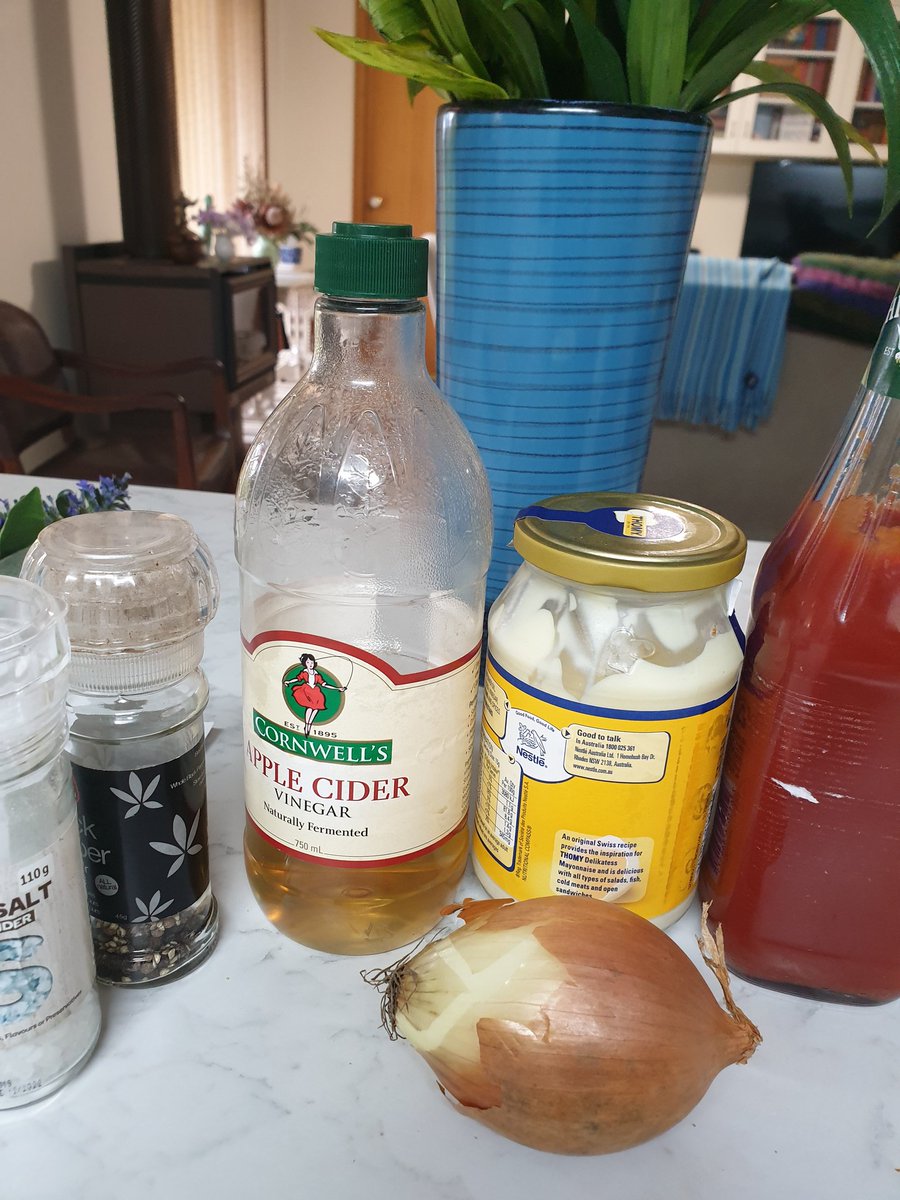
Ready for some World Space Week cuisine? #WSW2020
Tonight I made Sputnikburgers! #WSW2020
https://twitter.com/drspacejunk/status/1311963510394548226?s=19
First of all, the Russian dressing!
1/2 cup mayonnaise
1/3 cup ketchup
1 tablespoon white wine vinegar
1 tablespoon onion finely minced
1/8 teaspoon salt
1/8 teaspoon pepper
#WSW2020
1/2 cup mayonnaise
1/3 cup ketchup
1 tablespoon white wine vinegar
1 tablespoon onion finely minced
1/8 teaspoon salt
1/8 teaspoon pepper
#WSW2020

Here's the finished Russian dressing. I made the full quantity and it was rather a lot! #WSW2020 

Here are the Sputnik garnishes. The original recipe calls for olives, but I'm not a fan, so I substituted glacé cherries. #WSW2020 

Ta da! Here is the finished Sputnikburger, complete with cherry Sputnik and Laika the [hot] dog. Russian dressing on the side. #WSW2020 

Caviar is the traditional accompaniment to the Sputnikburger, but it's not everyone's cup of tea. I reckon finger limes (if I could have got some, it's a bit too early) would be the perfect substitute. #WSW2020 images.app.goo.gl/a3hCZWAZAFsXiv…
And now, dessert ..... I unveil the Nose Cone! #WSW2020 

Recipe for the Nose Cone: waffle cones, glacé cherries, Grand Marnier, Anna's Thins (Swedish biscuits, any flavour) vanilla icecream, milk chocolate. Stand the cones in a glass and drop a cherry in, to represent a satellite. #WSW2020
Pour a little Grand Marnier into a saucer. Use scissors to trim petals from biscuits (one for each cone). Layer ice cream and biscuit petals dipped in Grand Marnier until cones are full. Finish with the central biscuit disc dipped in GM to close. #WSW2020
Put the cones into the freezer for a while. Then, melt milk chocolate in a small bowl in microwave, dip cones in to cover wide end, and return to freezer until ready to eat. That is the Nose Cone! #WSW2020 #delicious 

I made Korolev sauce to go with them, but didn't use it as the Nose Cones were rich enough already. #WSW2020
I think I'll rename this dessert the Wresat Nose Cone in honour of Australia's first satellite, launched in 1967! #WSW2020 @AusSpaceAgency images.app.goo.gl/zdR7VJX4ARa4D7…
• • •
Missing some Tweet in this thread? You can try to
force a refresh







